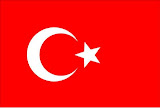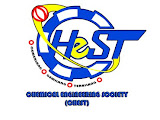IVAC'08 - Hippodrome of Constantinopole
0009
18 April 2008
The Hippodrome of Constantinople (Turkish: Sultanahmet Meydanı, At Meydanı) was a horse-racing track that was the sporting and social centre of Constantinople, capital of the Byzantine Empire and the largest city in
Today it is a square named Sultanahmet Meydanı (
The Hippodrome today, with the Walled Obelisk in the foreground and Thutmosis' Obelisk on the right
The word hippodrome comes from the Greek hippos ('ιππος), horse, and dromos (δρομος), path or way. Horse racing and chariot racing were popular pastimes in the ancient world and hippodromes were common features of Greek cities in the Hellenistic, Roman and Byzantine eras.
Hippodrome monuments
Serpent Column
To raise the image of his new capital,
The Serpent Column
Among these was the Tripod of Plataea, now known as the Serpent Column, cast to celebrate the victory of the Greeks over the Persians during the Persian Wars in the 5th century BC.
The bowl was destroyed or stolen during the Fourth Crusade. The serpent heads were destroyed as late as the end of the 17th Century, as many Ottoman miniatures show they were intact in the early centuries following the Turkish conquest of the city.Parts of the heads were recovered and are displayed at the Istanbul Archaeology Museum. All that remains of the Delphi Tripod today is the base, known as the "Serpentine Column".
Obelisk of Thutmose III
Obelisk of Thutmosis III
Another emperor to adorn the Hippodrome was Theodosius the Great, who in 390 brought an obelisk from
The base of the Obelisk of Thutmosis III showing Emperor Theodosius as he offers a laurel wreath to the victor from the Kathisma at the Hippodrome
Theodosius had the obelisk cut into three pieces and brought to
In the 10th century the Emperor Constantine Porphyrogenitus built another obelisk at the other end of the Hippodrome.
The Walled Obelisk
It was originally covered with gilded bronze plaques, but they were sacked by Latin troops in the Fourth Crusade. The stone core of this monument also survives, known as the Walled Obelisk.
Statues of Porphyrios
Seven statues were erected on the Spina of the Hippodrome in honour of Porphyrios, a legendary charioteer in his time who raced for the two parties which were called "Greens" and "Blues".
None of these statues have survived. Only the bases of two of them have survived and are displayed in the
The Hippodrome today
Today the area is officially called Sultan Ahmet Square, and is carefully maintained by the Turkish authorities. The course of the old racetrack has been indicated with paving, although the actual track is some two metres below the present surface. The surviving monuments of the Spina (the middle barrier of the racecourse), the two obelisks and the Serpentine Column, now sit in holes in a landscaped garden.
The German Fountain ("The Kaiser Wilhelm Fountain"), an octagonal domed fountain in neo-byzantine style, which was constructed by the German government in 1900 to mark the German Emperor Wilhelm II's visit to
The Hippodrome has never been systematically excavated by archaeologists. A portion of the substructures of the Sphendone (the curved end) became more visible in the 1980s with the clearing of houses in the area.
In 1993 an area in front of the nearby Sultanahmet Mosque (the Blue Mosque) was bulldozed in order to install a public toilet, uncovering several rows of seats and some columns from the Hippodrome.
Investigation did not continue further, but the seats and columns were removed and can now be seen in








































